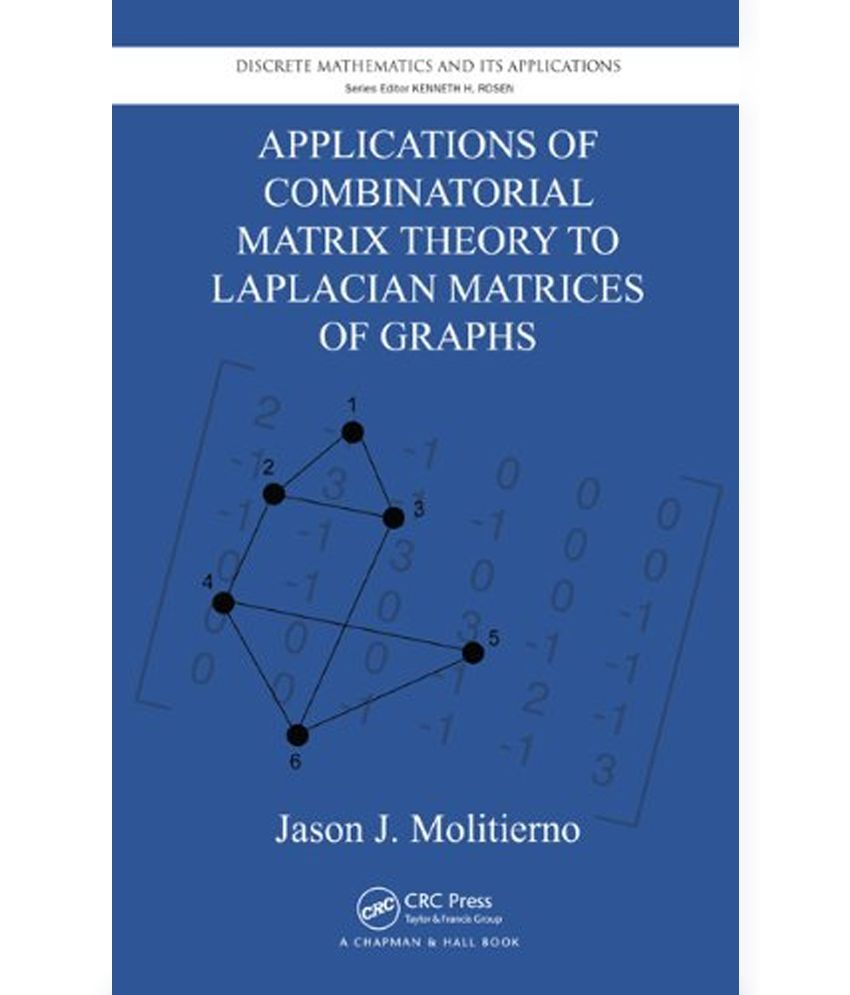Something went wrong. Please refresh the page and try again.
Something went wrong. Please refresh the page and try again.
Notifications can be turned off anytime from settings.
Item(s) Added To cart
Qty.
Something went wrong. Please refresh the page and try again.
Something went wrong. Please refresh the page and try again.
Exchange offer not applicable. New product price is lower than exchange product price
Please check the updated No Cost EMI details on the payment page
Exchange offer is not applicable with this product
Exchange Offer cannot be clubbed with Bajaj Finserv for this product
Product price & seller has been updated as per Bajaj Finserv EMI option
Please apply exchange offer again
Your item has been added to Shortlist.
View AllYour Item has been added to Shopping List
View AllSorry! Applications of Combinatorial Matrix Theory to Laplacian Matrices of Graphs is sold out.


You will be notified when this product will be in stock
Brief Description
"Preface On the surface, matrix theory and graph theory are seemingly very different branches of mathematics. However, these two branches of mathematics interact since it is often convenient to represent a graph as a matrix. Adjacency, Laplacian, and incidence matrices are commonly used to represent graphs. In 1973, Fiedler published his first paper on Laplacian matrices of graphs and showed how many properties of the Laplacian matrix, especially the eigenvalues, can give us useful information about the structure of the graph. Since then, many papers have been published on Laplacian matrices. This book is a compilation of many of the exciting results concerning Laplacian matrices that have been developed since the mid 1970's. Papers written by well-known mathematicians such as (alphabetically) Fallat, Fiedler, Grone, Kirkland, Merris, Mohar, Neumann, Shader, Sunder, and several others are consolidated here. Each theorem is referenced to its appropriate paper so that the reader can easily do more in-depth research on any topic of interest. However, the style of presentation in this book is not meant to be that of a journal but rather a reference textbook. Therefore, more examples and more detailed calculations are presented in this book than would be in a journal article. Additionally, most sections are followed by exercises to aid the reader in gaining a deeper understanding of the material. Some exercises are routine calculations that involve applying the theorems presented in the section. Other exercises require a more in-depth analysis of the theorems and require the reader to prove theorems that go beyond what was presented in the section. Many of these exercises are taken from relevant papers and they are referenced accordingly"--
Learn More about the Book
On the surface, matrix theory and graph theory seem like very different branches of mathematics. However, adjacency, Laplacian, and incidence matrices are commonly used to represent graphs, and many properties of matrices can give us useful information about the structure of graphs.
Applications of Combinatorial Matrix Theory to Laplacian Matrices of Graphs is a compilation of many of the exciting results concerning Laplacian matrices developed since the mid 1970s by well-known mathematicians such as Fallat, Fiedler, Grone, Kirkland, Merris, Mohar, Neumann, Shader, Sunder, and more. The text is complemented by many examples and detailed calculations, and sections followed by exercises to aid the reader in gaining a deeper understanding of the material. Although some exercises are routine, others require a more in-depth analysis of the theorems and ask the reader to prove those that go beyond what was presented in the section.
Matrix-graph theory is a fascinating subject that ties together two seemingly unrelated branches of mathematics. Because it makes use of both the combinatorial properties and the numerical properties of a matrix, this area of mathematics is fertile ground for research at the undergraduate, graduate, and professional levels. This book can serve as exploratory literature for the undergraduate student who is just learning how to do mathematical research, a useful "start-up" book for the graduate student beginning research in matrix-graph theory, and a convenient reference for the more experienced researcher.
The images represent actual product though color of the image and product may slightly differ.
Register now to get updates on promotions and
coupons. Or Download App